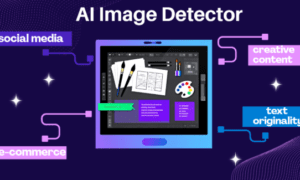Undress AI, an emerging technology capable of altering images to simulate nudity, has swiftly moved from the realm of science fiction to a tangible reality, raising significant questions and concerns in digital media and society. This powerful technology is reshaping social media, advertising, and personal content creation, while also prompting varied societal reactions and cultural impacts.
The Mechanics and Applications of Undress AI
Undress AI leverages advanced deep learning algorithms to analyze and alter images, creating highly realistic depictions of nudity. This technology, while groundbreaking, walks a fine line between innovative potential and ethical concerns. It utilizes convolutional neural networks (CNNs) and generative adversarial networks (GANs) to produce these altered images. The process involves training AI models on large datasets of images to understand and replicate human anatomy and skin textures convincingly.
Social Media Impact
The influence of undress AI on social media platforms is profound and multifaceted. On the one hand, it can be used creatively, allowing for innovative forms of digital expression and art. However, its misuse is a significant concern. The technology can easily be exploited to create non-consensual explicit images, leading to privacy violations and potential harm to individuals’ reputations and mental health.
Platforms like Facebook, Instagram, and Twitter are facing increasing pressure to develop robust detection and prevention mechanisms to combat the unauthorized use of undress AI-generated content. The prevalence of such content can lead to a toxic environment, eroding trust and safety on these platforms.
Advertising and Marketing
In advertising and marketing, undress AI presents both opportunities and challenges. It offers the potential for highly personalized and engaging content, particularly in the fashion and beauty industries. For example, virtual try-on experiences could be enhanced by this technology, providing customers with more accurate representations of how clothes fit and look.
However, the ethical implications are considerable. Brands must navigate the fine line between innovative marketing strategies and the invasion of consumer privacy. Misuse of undress AI in advertising could lead to significant backlash and damage to brand reputation. Companies need to ensure transparency and consent in the use of such technology to maintain consumer trust.
Personal Content Creation
For personal content creators, undress AI can be a double-edged sword. On the one hand, it offers new avenues for creativity and expression. On the other hand, it poses risks of misuse and exploitation. Content creators, particularly those with significant online followings, may find themselves targets of non-consensual image alterations, leading to potential legal and emotional consequences.
Societal Reactions and Cultural Impact
The societal reactions to undress AI are diverse, reflecting broader cultural and ethical considerations. Privacy advocates and human rights organizations have voiced strong opposition to the technology’s potential for abuse. They argue that undress AI can be weaponized for harassment, blackmail, and other forms of digital violence, necessitating stringent regulations and protective measures.
Conversely, some technologists and digital artists celebrate the creative possibilities afforded by undress AI. They view it as a tool that, when used responsibly, can push the boundaries of digital art and expression.
Regulatory and Ethical Considerations
The rapid development of undress AI has outpaced existing regulatory frameworks, creating a need for new laws and guidelines to address its use and misuse. Policymakers must balance the technology’s potential benefits with the imperative to protect individuals’ privacy and rights. Potential regulatory measures include mandatory disclosures of AI-generated content, consent requirements, and stricter penalties for misuse.
Ethical considerations are equally important. Developers and users of undress AI must adhere to principles of transparency, consent, and accountability. Industry self-regulation, combined with legal oversight, can help mitigate the risks associated with this technology.
Conclusion
Undress AI is transforming the landscape of digital media, impacting social media, advertising, and personal content creation in significant ways. While it offers intriguing possibilities for innovation and creativity, it also raises substantial ethical and privacy concerns. As society grapples with the implications of this powerful technology, a balanced approach that fosters responsible use while protecting individual rights will be essential to harnessing its potential for positive impact.
As the conversation around undress AI evolves, stakeholders from technology developers to policymakers and the general public must engage in ongoing dialogue to navigate the complexities of this new digital frontier. Through collective efforts, we can ensure that undress AI contributes to a more innovative yet ethical digital future.
Read More From Techbullion And Businesnewswire.com

































